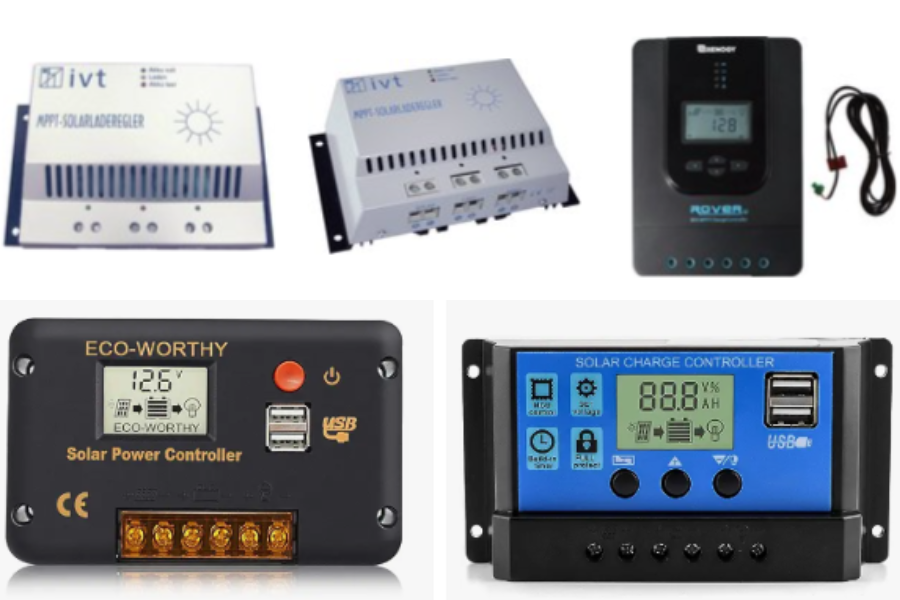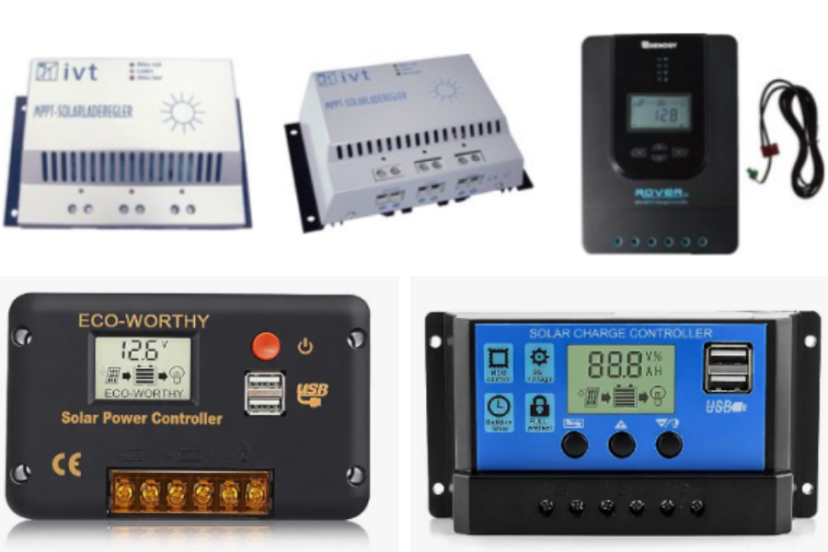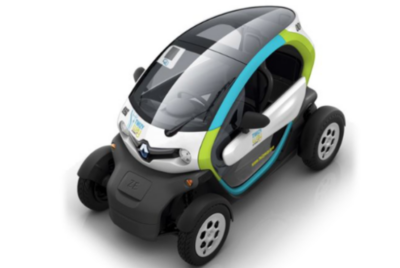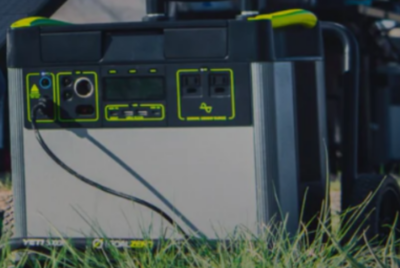Solar Charge Controller – Your Key to Efficient Solar Energy
Maximizing Efficiency in Solar Energy Systems
As an advocate for solar energy, I’m excited to delve into the essential topic of solar charge controller. These unassuming devices play a pivotal role in ensuring the efficiency, longevity, and safety of solar energy systems. In this comprehensive guide, we’ll explore every facet of solar charge controllers, from their fundamental functions to selecting the right one for your solar setup. So, let’s harness the power of the sun with confidence and precision!
Introduction to Solar Charge Controllers
1.1 What is a Solar Charge Controller?
Solar charge controllers are the unsung heroes of solar energy systems. They act as vigilant guardians, regulating the flow of energy between solar panels, batteries, and loads. Their primary function is to prevent overcharging and over-discharging of batteries, ensuring their longevity and reliability.
1.2 Why Are Solar Charge Controllers Crucial?
Without a charge controller, the unregulated flow of electricity from solar panels can damage batteries and even pose safety hazards. By intelligently managing the charging process, solar charge controllers optimize energy conversion, increase system efficiency, and extend the lifespan of vital components.
Stay tuned as we venture deeper into the world of solar charge controllers, exploring the various types, installation tips, maintenance guidelines, and even troubleshooting common issues. Whether you’re a solar enthusiast or someone considering harnessing the sun’s energy, this guide will empower you to make informed decisions and maximize the benefits of your solar energy system. Let’s get started!
Types of Solar Charge Controllers
2.1 PWM (Pulse Width Modulation) Controllers
PWM controllers are the traditional workhorses of solar charge regulation. They modulate the width of the electrical pulses delivered from solar panels to the battery. As the battery voltage rises, PWM controllers gradually reduce the pulse width to maintain a safe charging level. While cost-effective and reliable, they are best suited for smaller systems with lower voltage panels.
2.2 MPPT (Maximum Power Point Tracking) Controllers
MPPT controllers are the champions of solar charge regulation. They employ sophisticated algorithms to track the maximum power point of your solar panels continually. By dynamically adjusting the voltage and current, MPPT controllers maximize the energy harvested from your panels, especially in cold or cloudy conditions. This efficiency boost often justifies the higher initial cost, making MPPT controllers a wise choice for larger systems and when using high-voltage panels.
Sizing Your Solar Charge Controller
3.1 Calculating Solar Panel Wattage
Properly sizing your charge controller starts with understanding your solar panel wattage. Add up the total wattage of all your panels to determine the controller’s capacity. For example, if you have four 250-watt panels, your total panel wattage is 1000 watts.
3.2 Battery Voltage and Capacity
Next, consider your battery bank. Determine the voltage and capacity (in ampere-hours, Ah) of your batteries. Your charge controller should be compatible with your battery bank voltage. Additionally, ensure the charge controller’s current rating (in amperes, A) is adequate for your panels’ total wattage.
Installation and Wiring
4.1 Connection to Solar Panels
Connecting your solar panels to the charge controller is straightforward. Ensure the panel positive (+) and negative (-) leads match the controller’s labeled terminals. Always tighten connections securely to prevent voltage drop and heat generation.
4.2 Battery Connections
Connect your charge controller to the battery bank, following the manufacturer’s instructions. It’s crucial to maintain the correct polarity (positive to positive, negative to negative) to prevent damage.
4.3 Load Connections
Charge controllers often feature load terminals for connecting your DC loads, such as lighting or appliances. Ensure the load voltage matches your system voltage and adheres to the controller’s load capacity.
Solar Charge Controller Maintenance
5.1 Inspecting and Cleaning
Regularly inspect your charge controller for signs of wear, loose connections, or damage. Keep the controller clean and free of dust or debris that might impede its performance.
5.2 Firmware Updates
Check for firmware updates provided by the manufacturer. These updates may improve efficiency, add new features, or address potential issues. Keeping your controller’s firmware up to date ensures optimal performance.

Troubleshooting Common Issues
6.1 Overcharging and Over Discharging
If your batteries are overcharging or over-discharging, it’s essential to investigate the cause. Possible culprits include incorrect settings, faulty connections, or a malfunctioning charge controller. Consult the controller’s manual and consider seeking professional assistance if issues persist.
6.2 Temperature Compensation
Charge controllers often come with temperature sensors that adjust charging parameters based on battery temperature. If your batteries are consistently underperforming, check if the temperature compensation feature is enabled and correctly configured.
Advantages of MPPT Controllers
7.1 Improved Efficiency
MPPT controllers shine when it comes to efficiency. By constantly tracking the maximum power point of your solar panels, they can extract more energy, especially in suboptimal conditions. This increased efficiency can significantly impact the performance of your solar system, leading to higher energy yields and potentially shorter payback periods.
7.2 Compatibility with Higher Voltage Panels
MPPT controllers are compatible with higher voltage solar panels, which opens up opportunities for more flexible system designs. With the ability to use longer wire runs and smaller wire gauges, you can position panels further from your charge controller without significant energy losses. This flexibility can be especially beneficial in larger installations or when dealing with shade-prone areas.
PWM vs. MPPT: Which is Right for You?
8.1 Factors to Consider
Choosing between PWM and MPPT controllers depends on several factors:
• Budget: PWM controllers are generally more budget-friendly, while MPPT controllers come at a higher initial cost.
• System Size: For smaller systems with lower voltage panels, a PWM controller may suffice. Larger systems with high-voltage panels often benefit from the efficiency gains of MPPT controllers.
• Climate: In areas with less sunlight or variable weather conditions, MPPT controllers can significantly boost energy production.
8.2 Making the Informed Choice
Ultimately, the choice between PWM and MPPT controllers depends on your specific requirements and budget constraints. Consider your long-term energy goals, system size, and environmental conditions to make an informed decision.
Extending Battery Life with Smart Charging
9.1 The Importance of Proper Charging
Proper battery charging is paramount to prolonging their lifespan. Charge controllers play a crucial role in this process by ensuring that batteries are charged at the right voltage and current levels. Maintaining the correct charge profile helps prevent sulfation, a common cause of premature battery failure.
9.2 Equalization Charging
Some charge controllers offer an equalization charging feature. This periodic, controlled overcharge can help balance the cells within a battery bank, mitigating capacity imbalances and extending overall battery life. Consult your controller’s manual for guidance on utilizing this feature.
Conclusion
10.1 Summary of Key Takeaways
In this comprehensive guide to solar charge controllers, we’ve explored their critical role in solar energy systems. We’ve covered the types of controllers, sizing considerations, installation and maintenance tips, and even troubleshooting common issues. Additionally, we’ve delved into the advantages of MPPT controllers and offered guidance on choosing the right controller for your needs.
10.2 Embrace Solar Energy with Confidence
With the knowledge gained from this guide, you’re well-equipped to harness the power of the sun efficiently and sustainably. Solar charge controllers serve as the linchpin of your solar energy system, ensuring that every photon of sunlight is converted into valuable electricity. Embrace solar energy with confidence, knowing that you have the tools to optimize your system’s performance and maximize its benefits.
FAQs
1. How does a solar charge controller work?
Solar charge controllers regulate the flow of electricity from solar panels to batteries. They monitor battery voltage and adjust the charging process to prevent overcharging and over-discharging, ensuring battery health and system efficiency.
2. Can I use a PWM controller with high-voltage panels?
Yes, you can use a PWM controller with high-voltage panels, but it may not be the most efficient choice. MPPT controllers are better suited for high-voltage panels as they can maximize energy harvest in such conditions.
3. What happens if I don’t use a solar charge controller?
Without a solar charge controller, overcharging and over-discharging of batteries can occur, leading to battery damage, reduced lifespan, and potentially hazardous situations.
4. Are MPPT controllers worth the extra cost?
MPPT controllers can be worth the extra cost, especially in larger systems or areas with less consistent sunlight. Their efficiency gains often result in higher energy production, shorter payback periods, and increased overall system performance.
5. How can I monitor my solar charge controller’s performance?
Many solar charge controllers offer monitoring features, including real-time data on energy production, battery status, and charge rates. Consult your controller’s manual or consider using additional monitoring devices for more in-depth insights into your system’s performance.
With this comprehensive guide and FAQs, you’re well-prepared to navigate the world of solar charge controllers. Remember, these devices are the guardians of your solar energy system, ensuring it operates efficiently and effectively. Embrace solar energy, reduce your carbon footprint, and enjoy the benefits of clean, renewable power.




